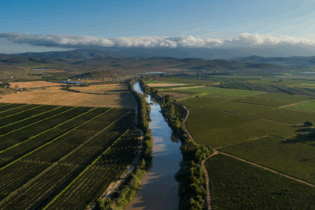Worldwide the shortage of water is expected to transform corporate and industrial practices, according to a report issued by professional services firm PwC.
PwC’s 2012 Water challenges, drivers and solutions study shows that the dwindling supply of safe drinking water throughout key regions, such as South Africa, China, India and the US is under major threat from unsustainable domestic, industrial and agricultural demands. The report anticipates that virtually every industry worldwide expects to undergo major transformation in the next decade in their business, production and planning models in the wake of a stressed water system and a lack of sanitary facilities. Luther Erasmus a senior manager and Water Expert at PwC, says: “Sub-Saharan African and South Asia remain the key regions in the world with the lowest use of safe drinking water and a lack of sanitary facilities.” “Sanitation and water stress pose major economic and social challenges as these inevitably have an effect on consumers’ disposable income, businesses’ profits and economic growth.” Globally, one in three people are affected by water scarcity and if current trends continue, nearly half of the world’s population will live in areas of high water stress by 2030, according to statistics issued by the Organisation for Economic Co-operation and Development (OECD). Erasmus says that the management of water has become an increasingly difficult and complex task for governments worldwide. The main challenges lie in providing access to safe drinking water for a global population that has risen from 1.5 billion at the beginning of the 20th century to seven billion today. The report states that the management of water has become both difficult and complex. The complexity arises from the multifaceted aspects of water management, beginning with technical, institutional and organisational issues, the application of new technologies, legal and regulatory concerns, and regulatory effectiveness. Other aspects include standards, investment, costs, financing, pricing, governance, financial, social and environmental sustainability. The supply of water has also become inseparable from the issue of sanitation of facilities needed for the treatment of wastewater prior to its discharge back into the environment.Erasmus says that water stress and a lack of sanitary facilities can cause major challenges for businesses, such as regulatory and reputational risks leading to significant business disruptions, higher costs, and even the loss of license to operate in regions experiencing water insecurity. In a recent global study issued by PwC, 41% of CEOs said that freshwater scarcity would have a negative effect on their company’s long-term success.
He says that investors and other stakeholders are also calling for better disclosure of water-performance and risks. “There is increasing pressure from investors and regulators for public companies to provide better disclosure on water-related performance and risks.” Although no clear standards for water disclosure have been implemented, some leading companies are making use of sustainability and emerging water-specific voluntary reporting frameworks for guidance, such as the Global Reporting Initiative Water Indicators and the Carbon Disclosure Project Water Guidelines. In order to manage the risks of water, companies need to be proactive and develop plans to minimise their effect on water resources, while still supporting growth through strategies to do more with less, says Erasmus. Businesses need to improve the use of water efficiency and strengthen governance for water matters by providing management oversight for water use. “They need to consider reducing reliance on conventional drinking water supply options by way of treating and recycling industrial process water and captured rainwater, as well as by using innovative strategies. “Organisations need to consider engaging in dialogue with communities and water utilities to better manage local and regional water resources and share common solutions.”
“Organisations need to consider engaging in dialogue with communities and water utilities to better manage local and regional water resources and share common solutions.”







